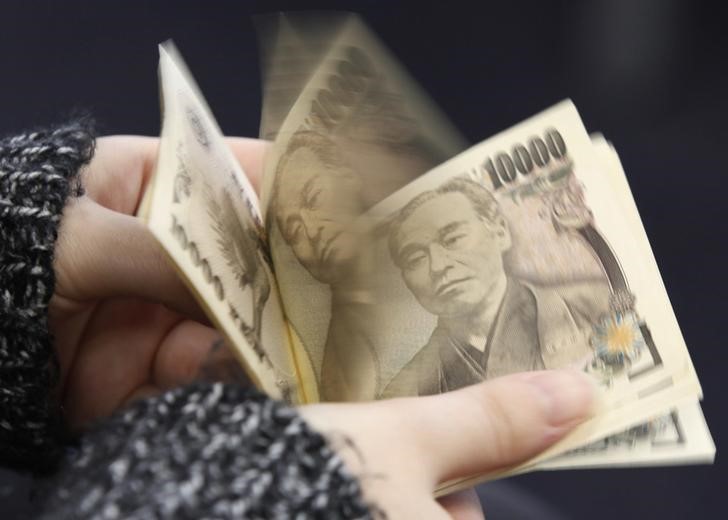Investing.com - The yen trended mildly weaker on Monday in Asia on weak GDP data.
USD/JPY changed hands at 101.33, up 0.06%, while AUD/USD traded at 0.7650, up 0.05%.
Japan reported second quarter GDP with a gain of 0.2% year-on-year, missing the 0.7% rise seen, and a flat quarter-on-quarter pace, below the 0.2% increase expected, with the figures weighed down by sluggish private consumption and net exports.
"There are some positive signs in capital investment but we need to watch the developments because corporate profits are being flat now in light of the appreciation of the yen," a senior Cabinet Office official said after the data.
Consumer spending, which accounts for about 60% of the GDP, rose 0.2% on quarter compared to a 0.1% decline seen, but that did little to lift spirits.
"Private consumption remains largely flat. Our assessment is unchanged," the official said.
To boost growth Japan earlier this year put together an economic stimulus package totaling ¥28.1 trillion, which includes ¥7.5 trillion in real fiscal spending over the next few years, in order to overcome years of deflation and raise the economy's near-zero growth potential.
The government estimates the budgetary measures in the package totaling Y7.5 trillion will push up the scale of real gross domestic product by about 1.3% in primary stimulative effects in a period for the rest of fiscal 2016 and the whole of fiscal 2017 ending in March 2018.
The U.S. dollar index, which measures the greenback’s strength against a trade-weighted basket of six major currencies, was last quoted at 95.68.
This week, investors will await Wednesday’s minutes of the Federal Reserve’s July policy meeting for fresh clues on the timing of the next U.S. rate hike as well as U.S. inflation data.
Elsewhere, in the U.K., market participants will be looking ahead to reports on employment, consumer prices and retail sales for further indications on the continued effect that the Brexit decision is having on the economy.
Investors will also be eyeing a report on German business confidence for fresh signals on the health of the euro zone's biggest economy in wake of Britain's vote to exit the European Union earlier in the summer.
Financial markets in Italy will be closed for a national holiday. Switzerland is to publish data on producer prices. The U.S.is to release a report on manufacturing activity in the New York region.
Last week, the U.S. dollar fell against a basket of major currencies on Friday, hitting a more than one-week low as unexpectedly weak U.S. data on consumer spending and inflation led investors to dial back their expectations for the timing and pace of Federal Reserve rate hikes.
U.S. retail sales were flat in July, the Commerce Department said, disappointing forecasts for a 0.4% rise and slowing sharply from growth of 0.8% in the preceding month.
Meanwhile, the July reading of the producer price index showed a decline of 0.4%, the largest drop since September 2015 and confounding expectations of a 0.1% gain.
Other data released Friday included business inventories, which rose more than expected in June, and consumer sentiment for August, which came in below expectations.
The downbeat data led investors to push back expectations for the next U.S. rate hike. Fed funds futures are currently pricing in just a 9% chance of a rate hike by September. December odds were at around 45%.
